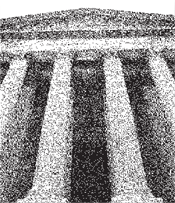In the summer of 2024, the Supreme Court issued its decision in Loper Bright Enterprises v. Raimondo, a case that may well reshape the landscape of federal regulation for decades to come. By overruling Chevron deference, the long-standing principle—named for the precedent-setting 1984 case—that courts should bow to reasonable agency interpretations of ambiguous statutes, Loper Bright has fundamentally changed the relationship between the branches of government. Where agencies like EPA once had considerable latitude to interpret scientific and technical language in the laws they implement and enforce, courts now seem to have to make such determinations as “questions of law,” usually the province of a judge. It is not yet possible to catalogue all the impacts that Loper Bright will have on administrative agencies, but one early lesson seems to be that they will need to be more exacting in their definition and use of key terms. In other words, the power to regulate now comes with the burden to clarify.
The balance between providing clear definitions on the one hand and on the other preserving agency discretion has for some time been a contentious issue for lawmakers, regulators, industry, and the public. These two approaches offer distinct advantages and challenges, which impact both the efficiency of governance and the trust the public and industry place in agencies responsible for regulations. Proponents of clear definitions point out that one of their key advantages is the ability to provide consistency and predictability in regulatory frameworks. By establishing clean boundaries and specific guidelines, precise definitions make it less burdensome for agencies to apply regulations uniformly. Uniformity reduces the potential for confusion or bias, which can help to build trust in agency leadership.
Furthermore, clear definitions often lead to more efficient decisionmaking because both regulatory bodies and businesses have a better understanding of what is required. Those who advocate for flexible definitions argue that rigidity oversimplifies complex issues, particularly in environmental policy or health and safety, which require nuance and flexibility. They argue that strict, one-size-fits-all definitions fail to address the variability and nuance of real-world situations. Balancing the legal clarity needed for effective enforcement with the uncertainties inherent in scientific research remains a challenge. New scientific discoveries can shift the assessment of risks. In regulatory contexts, this dynamic creates significant challenges for agencies that base decisions on the best available information.
For decades, the scope of judicial deference afforded to federal agencies by federal courts has evolved, as shown by a trio of administrative law doctrines: In Skidmore v. Swift & Co. (1944), the Supreme Court established that an agency’s interpretation of a statute may be entitled to respect—but not binding deference. Courts were to consider factors such as the agency’s reasoning, consistency, and specialized experience—the so-called “power to persuade.” This ruling reflects a functional respect for agency expertise but leaves ultimate interpretive authority to the judiciary.
Forty years later, Chevron U.S.A., Inc. v. Natural Resources Defense Council, Inc., altered the Skidmore standard of review by introducing a two-step test. Under Chevron, a court would first identify whether the statutory language is unambiguous. If the statute was clear, the court would stop there and apply that meaning. However, if the statute was ambiguous, then the court would determine whether the agency’s interpretation was “permissible.” As long as the interpretation was not arbitrary or contrary to the statute, the regulation would pass the Chevron test. This doctrine recognized that agencies, not courts, are better positioned to make policy judgments when there were statutory gaps, particularly if technical, scientific, or economic expertise was required. Chevron became a cornerstone of modern administrative law and, for the past 40 years, had provided agencies with significant leeway to implement broad and ambiguous statutory language.
Now, in Loper Bright, the Supreme Court has decisively rejected Chevron. The Loper Bright majority asserted that the 1984 precedent violated the separation of powers by allowing agencies to effectively determine the meaning of law when the statute is ambiguous. The Court said that questions of law are “emphatically the province and duty of the judiciary.” Under Loper Bright, courts are now required to independently interpret ambiguous statutory language. The ruling does not abolish agency discretion for questions of fact, but it does make clear that legal ambiguity is not an opportunity for agencies to make policy decisions.
Importantly, Loper Bright did not overturn Skidmore. Agencies may still receive respect from courts if their interpretations are well-reasoned and grounded in expertise. But Skidmore deference is discretionary, context-specific, and, some have argued, lacks the doctrinal clarity that Chevron once provided. Laws are often written with purposeful flexibility—sometimes to secure bipartisan support, sometimes to allow for evolving science, but perhaps most often because the problems they address are complex. In scientific and technical areas where Congress has historically left statutory terms purposefully vague, Loper Bright places agencies on unsettled ground. Judges, many of whom lack technical training, now serve as the primary arbiters of statutory terms and concepts that demand technical judgment.
For decades, EPA has used what might be seen as “strategic ambiguity” to assist in its implementation of statutes and regulations, and to fulfill its mission. The agency interpreted its statutory language in ways that allowed it to address emerging threats without waiting for Congress to rewrite environmental laws or to pass new ones. In many cases, this approach was not just a matter of administrative convenience but deemed essential to the agency’s ability to protect public health and the environment in real time. When new environmental challenges arose—such as greenhouse gas emissions, endocrine-disrupting chemicals, biotechnology, or novel industrial byproducts—EPA often interpreted existing statutory authorities to respond to such problems.
The agency often leaned on expert judgment to navigate the vague language in laws. The Clean Air Act contains terms like “adequate margin of safety” or “requisite to protect public welfare,” which aren’t clearly defined. However, these words are key to establishing air quality standards. Similar situations have been the subject of lawsuits, but after Loper Bright, legal watchers have observed a spike in new legal challenges despite this Court’s insistence that “mere reliance on Chevron cannot constitute a special justification for overruling such a holding.” While Loper Bright didn’t start this wave of litigation, it has clearly added momentum.
For decades, courts have been asked to review how EPA and other agencies interpret terms embedded in statutes. When Congress enacted the Toxic Substances Control Act in 1976, it gave EPA the authority to regulate chemicals that pose an “unreasonable risk of injury to health or the environment,” yet Congress did not define what constitutes an “unreasonable risk.” In Corrosion Proof Fittings v. EPA (1991), an appeals court struck down the agency’s attempt to ban asbestos under TSCA. The Fifth Circuit found that EPA failed to demonstrate that its regulatory ban was the “least burdensome” method of addressing the “unreasonable risk” posed. In doing so, this court interpreted TSCA’s language to require a higher evidentiary bar, and limited the agency’s ability to ban existing chemicals.
To address issues in TSCA, including the interpretation of “unreasonable risk,” Congress passed the Frank R. Lautenberg Chemical Safety for the 21st Century Act in 2016. This was the first major update to TSCA in 40 years and was an attempt to improve the transparency and accountability of EPA’s chemical safety evaluation process. Although the Lautenberg Act was hailed as a bipartisan victory for public health, its language reflects the very compromises that often lead to statutory ambiguity and court cases that result. Lawmakers sought to preserve agency flexibility while also imposing clearer requirements for transparency and consistency. As a result, the revised TSCA contains both mandatory procedural elements and open-ended terms that still require expert interpretation.
For example, the Lautenberg Act seeks to correct many of TSCA’s earlier shortcomings by removing the “least burdensome” language and mandating that EPA evaluate chemical safety without considering costs in its initial risk determinations. Yet the term “unreasonable risk” remains undefined—even though this was the term at issue in Corrosion Proof Fittings. Further, the Lautenberg Act now directs EPA to consider “susceptible subpopulations” and to base decisions on “the weight of the scientific evidence,” but this language did not directly fix the issues raised in earlier litigation in the area. Instead, Congress left considerable room for interpretation about how to implement these requirements, weigh different types of data, address scientific uncertainty, and define what level of risk is acceptable. The Lautenberg Act may provide stronger legal grounding for regulatory decisions that err on the side of caution, but it also invites litigation over the methodological details that remain imprecisely defined.
Consider another example under the new TSCA. To modernize toxicity testing and reduce animal use, TSCA Section 4(h)(2)(C) mandates the agency “reduce and replace animal testing” and promotes the use of scientifically reliable alternatives, often referred to as New Approach Methodologies. If challenged in court, EPA could face regulatory whiplash. On one hand, this section of TSCA encourages innovation in toxicity testing. On the other, EPA’s decisions to use NAMs can be second-guessed by courts unfamiliar with emerging technologies. The application of Loper Bright likely means that courts must make their own determinations about whether novel scientific approaches meet statutory requirements, and can thus bypass an agency’s technical rationale. As agencies continue to advance and validate scientifically sophisticated tools, they must also navigate the growing tension between innovation and legal risk.
However, while Loper Bright has sharpened the legal consequences of statutory ambiguity, litigation over vague definitions is nothing new. In Entergy Corp. v. Riverkeeper, Inc. (2009), the Supreme Court tackled the meaning of the Clean Water Act’s requirement that facilities use the “best technology available” to minimize environmental harm from cooling water intake structures. EPA had interpreted the statute to allow consideration of cost-benefit analysis when selecting technology for existing facilities. Environmental groups challenged this interpretation, arguing the statute required the most environmentally effective technology regardless of cost. The Court ruled with EPA, holding that the statute did not unambiguously prohibit cost considerations and that the agency’s interpretation was permissible under Chevron. This case exemplifies how the 1984 precedent allowed agencies to fill in gaps in ambiguous statutes where Congress left terms like “best” undefined. It also underscores how courts historically applied the judicial standard to agencies’ technical judgment, particularly in the face of complex scientific and economic trade offs.
However, judicial skepticism of agency interpretations did exist prior to Loper Bright. In Sackett v. EPA (2023), the Supreme Court narrowed EPA’s authority under the Clean Water Act by rejecting the agency’s interpretation of what qualifies as federally protected wetlands. While not a Chevron case, it was fundamentally about competing definitions. The agency offered one definition, rooted in scientific expertise, while the Court adopted another, grounded in its interpretation of the statutory text. These cases illustrate two different judicial approaches to statutory ambiguity. In Entergy, the Court accepted that ambiguity invited agency discretion. In Sackett, that ambiguity was fixed by the justices. The Loper Bright decision formalizes this shift and places regulators like EPA in a more precarious legal position. If ambiguity is an increasing liability, clarity must become a core objective.
Agencies must now anticipate legal scrutiny not just of their conclusions, but of the scientific methods they used to reach them. Every definition, assumption, and inference must be backed by robust legal and scientific justification. Shifting interpretive authority toward the judiciary raises important questions about institutional competency. Judicial control over statutory interpretation may lead to less adaptive regulatory outcomes. While judges have the discretion to consult with experts, in litigation complex technical debates are often captured simplistically as binary legal arguments.
As a result, this new era in regulatory science places increased emphasis on the legal distinction between questions of law and questions of fact, as well as their overlap. In parsing this distinction, it is useful to consider that a question of law concerns how a statute should be interpreted or applied while a question of fact involves a determination about what happened or what the evidence shows. In litigation, the judge determines questions of law. Questions of fact are determined either by a jury or, in a bench trial, by the judge. Given the change in direction that Loper Bright has created, courts are now faced with the task of distinguishing between these two questions. It might be especially challenging to address mixed scientific/legal determinations, especially if courts classify them as questions of law subject to de novo review (without deference to the lower court ruling). If every use of expert discretion is vulnerable to being recast as a question of law, agencies will probably face a very high hurdle when implementing statutes that contain broad mandates to protect public health.
Efforts to reinstate broad agency deference are unlikely to find a sympathetic audience in the courts. Loper Bright reflects a broader skepticism toward permitting agencies to define the scope of their own power. While courts have long accepted that agencies possess institutional expertise in complex regulatory arenas, the new judicial approach would seem to elevate statutory clarity over administrative flexibility. However, Congress does retain the authority to clarify the scope of agency discretion through statutory amendments. In theory, this could involve updating statutes to explicitly delegate interpretive authority to the relevant agency, or to provide more detailed definitions of ambiguous terms. This language would reinforce the agency’s ability to implement technically complex programs in a manner consistent with legislative intent. However, legislative solutions like that are not easy to achieve, as demonstrated by the 2016 amendments to TSCA discussed earlier. Also, they might raise other legal issues, such as the high court’s non-delegation doctrine. In addition, any effort to revise foundational regulatory laws is likely to become entangled in broader debates about the size and role of the administrative state. Attempts to legislatively mandate agency deference could be interpreted as attempts to expand federal regulatory power, triggering partisan opposition. Procedurally, securing the bipartisan consensus required to make these changes could prove difficult in the current political climate.
One of the enduring challenges in relying on Congress to clarify statutory ambiguities is the increasing difficulty within the legislative branch of preparing and enacting tightly drafted laws. Congress often prefers to leave the details of implementation to agencies precisely because it allows lawmakers to avoid difficult political choices. Vague statutory language can be designed to secure a broad coalition or punt contentious decisions to administrative experts. In this sense, Chevron deference functioned as a release valve for legislators. Loper Bright can be seen as eliminating that mechanism. The incentives in Congress to maintain strategic ambiguity remain strong, especially in politically charged policy areas.
There is also a danger that Congress might overcorrect and draft excessively rigid statutes that limit agency flexibility in ways that would hinder the implementation of the law in question. In highly technical domains, such as environmental regulation, detailed statutory prescriptions are at risk of becoming obsolete as science and society change. A statute that specifies precise exposure thresholds or prescriptive methodologies could preclude the incorporation of scientific advances. One potential solution is for Congress to include dynamic regulatory mechanisms such as review clauses or explicit scientific reevaluation triggers that preserve flexibility while still providing clear guardrails. However, designing such legislation is not a simple task, and could require a level of technical understanding and political coordination that is not always available.
Furthermore, there are legal complexities that would affect congressional efforts to reaffirm agency authority. While Congress can delegate interpretive responsibilities to agencies, the delegation must be made in a way that does not run afoul of the Constitution. The non-delegation doctrine prohibits Congress from transferring its core legislative powers to another branch without providing an “intelligible principle” to guide the exercise of that authority. The doctrine can be seen as a potential constraint on broad agency discretion. Statutory amendments that attempt to restore interpretive flexibility could lead to litigation.
Regardless of one’s perspective on this change in delegation, agencies must now adapt to a legal landscape where regulatory clarity is more important than ever. The preferable strategy for agencies points toward embracing clearer definitions and more precise rulemaking. Agencies must strengthen the transparency, precision, and defensibility of their rulemakings within the bounds of their existing authority. They can take steps to ensure that their rules withstand judicial scrutiny, and in doing so, they may create benefits for a range of stakeholders by fostering greater predictability and transparency in regulatory decisionmaking.
While a clear picture of the full impact of Loper Bright on the promulgation of regulations is not yet visible, given what we know an outline of some steps that could be taken has begun to emerge, especially suggested steps by EPA. The agency should seize this opportunity to reassert the value of its scientific judgment, building regulatory narratives that are not only technically correct but also compelling to the courts. It should prioritize defining key statutory terms with specificity in its rulemaking process, anchoring definitions in both legislative history and science. Terms like “hazardous air pollutant,” “unreasonable risk,” and “best available technology” should be accompanied by detailed regulatory justifications that are backed by the best scientific data available. To the extent that scientific uncertainties are involved, EPA should explain their nature and show how they have been addressed. In rulemakings under various laws like the Clean Air Act, EPA might seek to more explicitly explain how it assesses terms such as “adequate margin of safety,” including the threshold assumptions, risk models, and uncertainty factors used to justify that margin. By clearly documenting how it balances risks to vulnerable populations against feasibility concerns, the agency can build a record that anticipates judicial scrutiny and underscores its role as a technical authority, with the goal of distinguishing questions of fact (based in science) from questions of law.
EPA should proactively address sources of uncertainty in order to be more transparent in its rulemaking. It and other regulatory agencies should also explicitly point to past interpretations, demonstrating how scientific developments justify any shifts, and acknowledge limitations or uncertainties. If possible, it and other agencies should explicitly distinguish between scientific uncertainty (e.g., data gaps or evolving methodologies) and policy choices (e.g., protective assumptions). This transparent framing may preempt legal challenges that conflate scientific discretion with unbounded governmental power. Additionally, an agency could publish more timely responses to public comments that explain how scientific and legal concerns raised were evaluated and incorporated—or not. These materials can serve as a persuasive record of reasoned decisionmaking. Finally, agencies must expand their use of public-facing databases that allow external experts to replicate and evaluate agencies’ analyses.
For industry, a shift toward sharpened regulatory definitions could reduce uncertainty and compliance costs and provide clarity about how regulations will be applied. Should regulators adopt well-defined rules, businesses may find it easier to anticipate and plan for regulatory obligations. This could result in more stable operational decisionmaking and fewer legal challenges. State governments and policymakers could also experience shifts in their roles within regulatory systems. With courts applying stricter statutory interpretations, the boundaries between federal and state authority could become more clearly defined. Narrower readings of federal statutes might limit the scope of federal preemption and create more space for state-level regulation, leading to adjustments in how federal and state agencies collaborate on policy implementation. States potentially could have greater impact in areas where federal law is less explicit. Public interest organizations will also likely see changes in how they engage with regulatory decisions. Now more constrained in their interpretive flexibility, agencies must lean more heavily on transparent and inclusive rulemaking processes. The public comment period gains renewed importance as a venue for establishing the factual record and rationale underlying new rules. By strengthening procedural rigor and opening their decisionmaking to greater scrutiny, agencies can enhance the defensibility of their actions and improve stakeholder buy-in and trust.
The end of Chevron deference does not mean the end of effective regulation, but it does mean the federal government must adapt to a fundamentally different legal and political environment. In this new era, agencies must lead not only as regulators but as strategic communicators, legal architects, public educators, and consumers of science. Agencies must take the invitation still left open by Skidmore to demonstrate the persuasiveness of their interpretations and the integrity of their science. They must proactively clarify the terms they use, distinguish the sources of uncertainty they face, and build rulemaking records that are as compelling to judges as they are to scientists and stakeholders. Federal agencies can no longer rely on the judicial deference standard that dominated the last 40 years of administrative law. Their role is now more complex, because they must justify, defend, and explain their decisions clearly, forcefully, and transparently. In doing so, the door is open for agencies to chart their path, and bolster their credibility, in a changed regulatory landscape.







